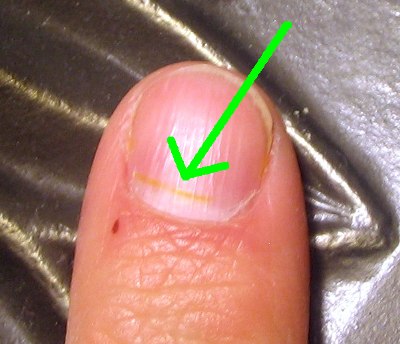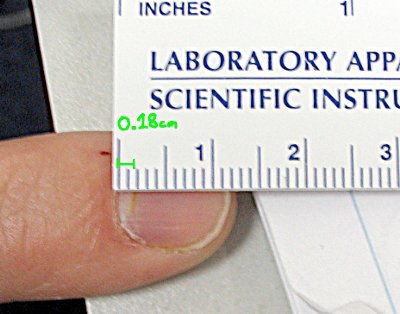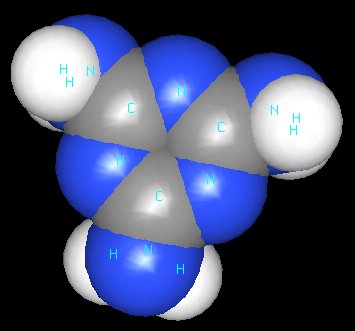A colleague in the natural sciences department here at the college handed me a printed copy of an article recently, and asked me for my opinion “as a chemist” on it. I took the article and, since it was about 2 minutes before my next class, said I’d look at it later. Later came, and I was in for a bit of a shock. The article in question was one from the “Institute for Creation Research”: Chemistry by Chance: A Formula for Non-Life by one Charles McCombs, Ph.D.
Dr. McCombs seems to be a retired organic chemist. So, you would expect McCombs to have some chemical objections to evolution. (As commenter wb points out below, he is really trying to critique abiogenesis – what happened before evolution started.)
Before we get started, I’d like to point out the format of the article. It’s a list. Like many creationists, McCombs spews out a bunch of soundbite-sized objections to the science in the hopes that something will stick. Most of these objections are simply old creationist claims that have been debunked a hundred times over. You can read about those – like [the stability of biomolecules] and [the “problem” of chirality] – over at the Index to Creationist Claims. Let’s see what McCombs says that might be new.
In a watery environment, amino acids and nucleotides cannot combine to form the polymeric backbone required for proteins and DNA/RNA.
Never mind, of course, that living cells do this sort of thing, and they’re 70% water.
In the laboratory, the only way to cause a reaction to form a polymer is to have the chemical components activated and then placed in a reactive environment. The process must be completely water-free, since the activated compounds would react with water. How could proteins and DNA/RNA be formed in some primordial, watery soup if the natural components are unreactive and if the necessary activated components cannot exist in water?
The way we choose to make a chemical in a laboratory environment may be quite different from the way a chemical can be made in the natural environment. I may choose to make oxygen gas in my lab via decomposition of mercuric oxide, but that’s not how the algae in the pond across campus do it.
Since living cells can manage making peptides with water around, you might envision that there would be some mechanisms available for the formation of peptides in the presence of water. One such mechanism is the salt-induced peptide formation (SIPF) reaction, which can link up amino acids in aqueous solution when sodium chloride, copper(II) ions, and sufficient heat are available. It’s quite likely that these things were available before life came about. Other possible pathways to peptide formation in aqueous solution involve sulfur, something else that was available on the ancient Earth.
McCombs later comes up with this argument, which I haven’t heard before. I’ll quote it in full.
Every time one component reacts with a second component forming the polymer, the chemical reaction also forms water as a byproduct of the reaction. There is a rule of chemical reactions (based on Le Chatelier’s Principle) called the Law of Mass Action that says all reactions proceed in a direction from highest to lowest concentration. This means that any reaction that produces water cannot be performed in the presence of water. This Law of Mass Action provides a total hindrance to protein, DNA/RNA, and polysaccharide formation because even if the condensation took place, the water from a supposed primordial soup would immediately hydrolyze them. Thus, if they are formed according to evolutionary theory, the water would have to be removed from the products, which is impossible in a “watery” soup.
Never mind, for the moment, that reactions that can link up amino acids in water under conditions that may have been available on the ancient Earth have been demonstrated and studied. Let’s look at his argument.
Perhaps McCombs means to confuse us by throwing around terms like “Le Chateleir’s Principle” and “The Law of Mass Action”. Perhaps he merely condused himself, but did McCombs really say that “any reaction that produces water cannot be performed in the presence of water“? That’ll be news to any freshman chemistry student who has ever titrated an aqueous solution of an acid with aqueous sodium hydroxide – a reaction that produces water in an aqueous solution.
| HC2H3O2(aq) + OH–(aq) –> H2O(l) + C2H3O2–(aq)
The titration of vinegar with aqueous sodium hydroxide is a staple of introductory chemistry labs. |
Maybe that quote of his is not what he really meant to say, but nowhere does Le Chateleir’s Principle say that it’s impossible to do a chemical reaction if one of the products is already present.
After recycling more discredited creationist claims (see the links at the beginning of this post for more on those), McCombs ends his screed by saying that
The synthesis of proteins and DNA/RNA in the laboratory requires the chemist to control the reaction conditions, to thoroughly understand the reactivity and selectivity of each component, and to carefully control the order of addition of the components as the chain is building in size. The successful formation of proteins and DNA/RNA in some imaginary primordial soup would require the same level of control as in the laboratory, but that level of control is not possible without a specific chemical controller.
The problem with this argument is that it assumes that since humans might make a specific biomolecule in the lab with the purpose of making it quickly and at a high purity, that nature has to be doing the same thing. McCombs has provided no evidence whatsoever that this assumption is valid. If anything, the fossil record of organisms that no longer roam the Earth says the exact opposite!
I also recommend taking a look at this article: “A model for the role of short self-assembled peptides in the very early stages of the origin of life” by Ohad Carny and Ehud Gazit. Very interesting stuff. As always, actual science is far more interesting than creationist screeching about what can’t be done because it violates cretionist (mis)understanding of science.




![[Liquid bromine and vapor] Liquid bromine and its vapor](http://whenchemistsattack.com/wp-content/uploads/2008/08/albr_before.jpg)
![[Aluminum bromide reaction, 10 seconds] Aluminum bromide reaction, 10 seconds after adding aluminum](http://whenchemistsattack.com/wp-content/uploads/2008/08/albr_still.jpg)
![[aluminum bromide sparks] After a few more seconds, it's hot enough to spark](http://whenchemistsattack.com/wp-content/uploads/2008/08/albr_still_2-450x316.jpg)
![[Aluminum bromide, flame] Oh yeah!](http://whenchemistsattack.com/wp-content/uploads/2008/08/albr_still_3-450x316.jpg)
![[Aluminum bromide: aluminum stuck to the beaker] Aluminum melted into the glass at the bottom of the beaker](http://whenchemistsattack.com/wp-content/uploads/2008/08/albr_aluminum.jpg)
![[Aluminum bromide solid on a beaker] Aluminum bromide (white / yellowish solid) on the beaker](http://whenchemistsattack.com/wp-content/uploads/2008/08/albr_product.jpg)